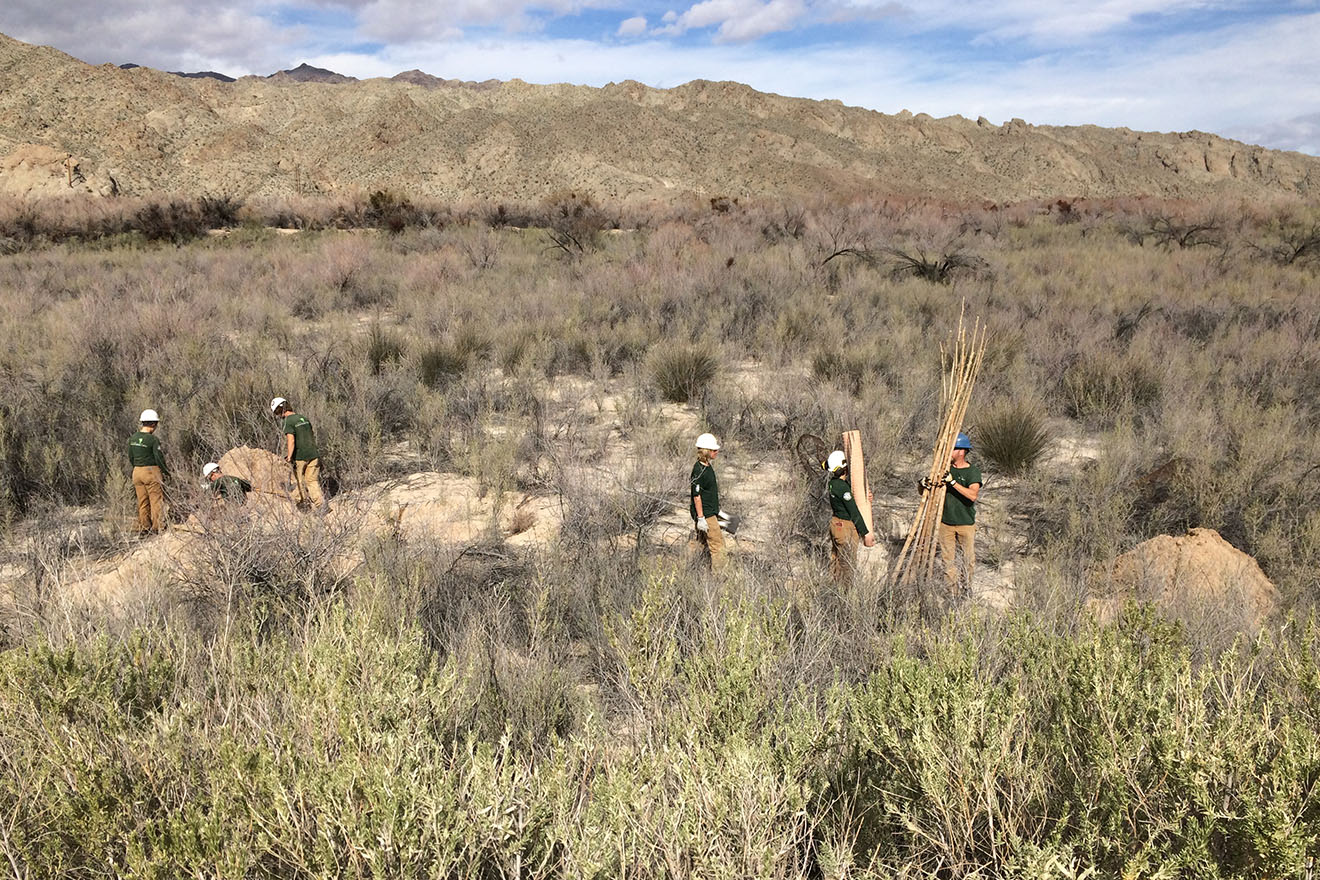Big Bend Project
 Above Photo: NDF crews pole planting.
Above Photo: NDF crews pole planting.
About this Project
Big Bend of the Colorado State Recreation Area is located along the Colorado River in Laughlin, NV. The park protects a rare desert riparian landscape along a riverbank that is largely fractured by human and agricultural development. Riparian forests in desert ecosystems provide vital wildlife habitat for species moving along the river corridor and serve important ecological functions like water filtration as desert washes empty into river basins. Riparian systems along the Colorado River (and throughout the southwest) are also inundated with saltcedar, an invasive weedy tree species. Infestations form dense monocultures of trees that negatively impact local soil and water quality and quantity, increasing soil surface salinity through salt deposition and may negatively impact salinity levels in adjacent water bodies. Healthy native systems may be resistant to saltcedar infestation and lack the negative impact on soil and water quality due to greater water use efficiency and beneficial soil chemistry from leaf litter.
Over the past several years NDF has been working on projects aimed to reduce the abundance of saltcedar throughout the park, restore native riparian forests, and help facilitate post-fire restoration after multiple wildfires have denuded much of the vegetation throughout the park. We have taken several approaches:
- Remove saltcedar in priority areas throughout the park through active removal and herbicide treatment to resprouting stems following fire.
- Plant native willows, mesquites, shrubs, and grasses along the riparian corridor in areas where saltcedar has been removed
- Bolster the re-establishment of native mesquite burned after fires through protection from herbivores after fire
To date, nearly 1500 plants have been planted, nearly 400 mesquite trees have been protected from browsing in a post-fire environment, and over 200 acres of saltcedar have been eliminated through handcrews and maintenance after wildfires.
For more information contact Cayenne Engel at cengel@forestry.nv.gov.
